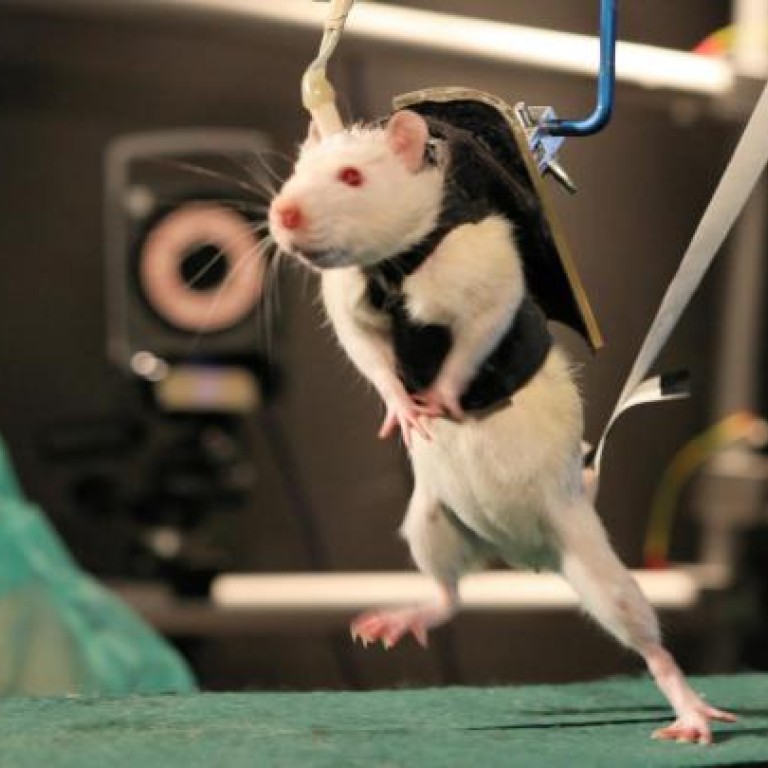
Shorts: Walking again after a spinal injury
Last year, Gregoire Courtine and his research team made paralysed lab rats with severe spinal cord injury walk - and run - again.
Last year, Gregoire Courtine and his research team made paralysed lab rats with severe spinal cord injury walk - and run - again.
At the Annual Meeting of the American Association for the Advancement of Science (AAAS) in Boston two days ago, the scientist from the École Polytechnique Fédérale de Lausanne (EPFL) announced plans to begin clinical trials in human patients within the next two years.
Through a quality known as neuroplasticity, the brain and spinal cord are able to adapt and recover from moderate injury. But prior to Courtine's groundbreaking study last year, recovery after severe injury to the spinal cord was impossible.
Courtine and his team injected into rats a chemical solution that triggers cell responses by binding to specific receptors located on the spinal neurons. This replaces neurotransmitters - dopamine, adrenaline and serotonin - released by brainstem pathways in healthy subjects and acts to prepare the neurons to co-ordinate lower body movement when the time is right.
After a couple of weeks... the rats were walking, sprinting, climbing stairs and avoiding obstacles
Five to 10 minutes after the injection, these chemically excited neurons were then given a jolt through continuous electrical signals sent through the spinal cord's nerve fibres through implanted electrodes.
After a couple of weeks of neurorehabilitation - the electrical-chemical stimulation coupled with a robotic harness - the rats were walking, sprinting, climbing stairs and avoiding obstacles.
The first phase of human trials will be held at the University Hospital of Lausanne (CHUV), which has developed extensive expertise in the electrical-chemical stimulation.
The second phase will take place at the newly planned EPFL Valais Wallis academic cluster in Valais, Switzerland, to be inaugurated in 2015. This health and biotechnology centre will focus on new treatments and rehabilitation.
